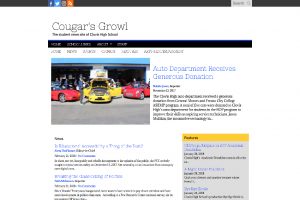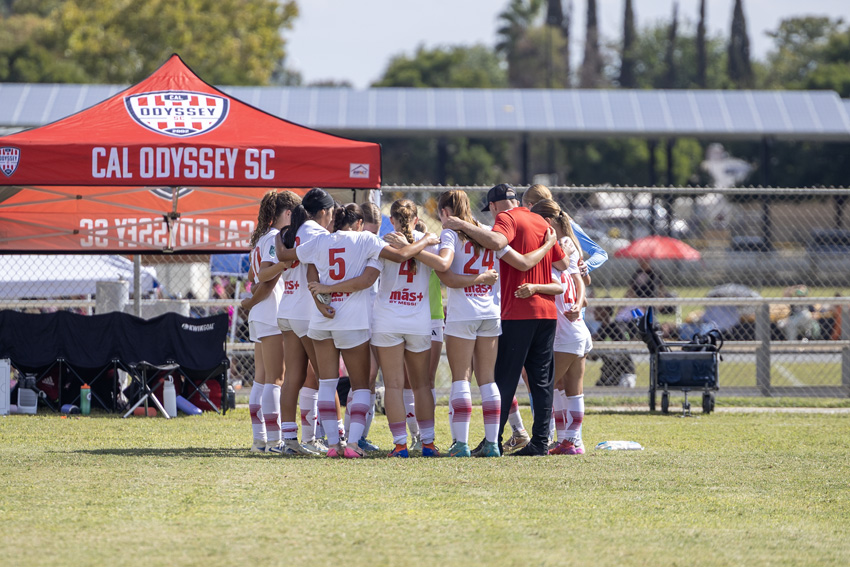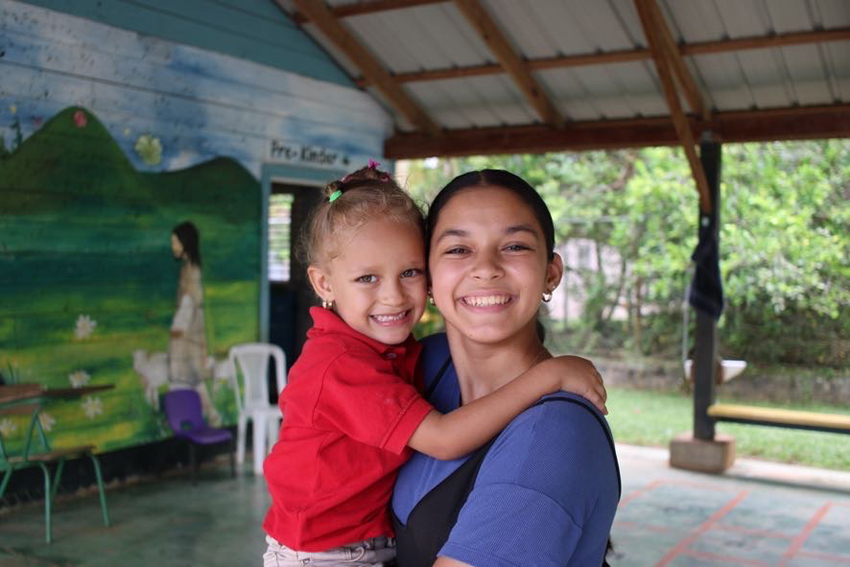Local publications share their methods, issues and purpose

One of the things many schools have in common is a campus newpaper. A place where students can share with their school community their news, events and opinions. Whether its a small semesterly paper or an online daily edition, school newspapers serve as the voice of the campus and its community.
As part of The Feather Online’s ongoing support of Scholastic Journalism Week and high school journalism and publications programs, it became evident to the staff to showcase and support local high school students and their voices.
The Fresno area is home to a variety of publications both at the high school and collegiate level. Some of these publications were asked about their policies, print schedules and their mission statements to spotlight student journalism in the area. While the following comments from area advisers and students are not a complete list of local programs, they are representative of schools closest to Fresno Christian High School.
The Charger Online, the online publication of Bullard HS, like many high schools used to be a print edition that had operated for years under the former adviser, Diane Honda. However, as the time went on she discovered that the print edition was losing popularity on campus. She repeatedly asked the admin for an online site, but to no avail. However, the paper was forced to go online when The Charger’s printer went out of business in 2015.
Honda discussed the type of news their paper covers and how they want to share their news to others.
“We covered all news that interested our student body,” Honda said. “This would include school sports, news items that interest students and are localized—if it is a national or statewide type story. Local FUSD stories and highlighting students who attend Bullard. One of our missions is to give a ‘voice to the voiceless’.”
Follow the Charger Online @Bullard Charger.
Part of The Illuminator’s history includes the paper previously being an ROP class at Edison High south Fresno. This class counted for both of the students electives and was a two block period. As time went on, the staff decreased as few students could or wanted to give up both of their electives for this class and the paper was eventually shifted to an online edition.
The average day of a student journalist involves juggling classes and the needs of the newsroom. We all meet for a 50-minute class twice a week with our adviser, but we do all of our work outside of and in between classes. On the nights before we print, we are sometimes in the office past midnight. We put in a lot of hard work, but being a college journalist is one of the greatest experiences of my life. I recommend taking The Rampage to anyone interested in becoming a journalist. — Ashleigh Panoo, The Rampage editor-in-chief
Kristie Leyba, an adviser for The Illuminator, spoke of the in-class writing students do daily to help improve reporters’ abilities.
“The students enrolled in the class are from all grade levels, academic backgrounds and writing proficiencies,” Leyba said. “Each of these students pursues topics of interest and represent many different subgroups on campus and can express those viewpoints. They have provided critical editorials on restroom conditions, school pep rallies, sports and open periods. They are encouraged to explore, research and represent stories with angles that are thoughtful and developed rather than creating focusing on superficial aspects of campus events.”
New Stories and Features are up! Checkout podcasts, horoscopes, sports coverage, and more!!!! Hear our Roar! https://t.co/NWiucBS8yX pic.twitter.com/S5Rg7sEv30
— The Illuminator (@ehstigernews) February 22, 2018
The Grizzly Claw of Central High School changed from a monthly printed edition to an online publication after loss in interest and staff in 2010. Since then the paper has seen an increase in interest and participation from the student body.
Shana Kaspian is the adviser for The Grizzly Claw. The school previously had a print version of the newspaper beginning in the 1930s, running until 2016. Kaspian realized a change was necessary, motivating her to transfer the paper from the printed version to online with just a small staff of 11. Kaspian feels that this has revolutionized the paper, honoring her predecessors before her and expanding Central High’s influence.

“As an adviser, I’m uncompromising when it comes to ethics,” Kaspian said. “I believe our staff is absolutely aware that honesty, effort and evidence are key to any article if they expect to pass or be published. I’m more flexible on quality depending on a staffer’s experience and ability level, but the expectation is that they have to be open to extensive criticism and revision. The staffers refer to editorial feedback on their drafts in terms of how ‘bloody’ it is, meaning how many red corrections were made to the article.
“I also try to convey that I will support them and allow them to cover almost any subject and that I want them to write about subjects they are truly curious or passionate about so their articles won’t read flat,” Kaspian continued. “Authenticity goes a long way when it comes to student progress and quality writing. Lastly, I stress freedom and accountability. Students make most of the major decisions from individual projects to overall program development. They own our victories and our failures. There’s no one else to blame.”
Even though this paper is relatively new, the writers of this paper have been able to champion different causes that are important to them, including an article on religious discrimination against Sikhs and another article on suicide prevention. Through articles like these, the Grizzly Claw has been able to make an impact on their community.
Follow the Grizzly Claw on Twitter @centralgrizzly .
Despite the benefits of high school journalism programs, there are school administrators in the area who say they do not have the resources to support high school journalism programs. Reasons vary depending on the school, funding and their personnel assets. Two local high schools shared why they do not have student publications.
The Learning Director of Clovis West High School, Karen M. Boone, shared why Clovis West does not have a paper.
“We are a comprehensive high school with many programs to support and not enough faculty to go around,” Boone said. “For the past few years, we have not had a faculty person qualified or interested in advising the school newspaper nor a demand for one from our student body.”
Despite this, the school does run a volunteer blog operated by students known as the Eagle Eye.
The English department chair of Buchanan High School, Sara Hanson, explained why the school no longer possesses a high school publications class.
“Our school stopped producing a newspaper mostly due to cost and staffing,” Hanson said. “The cost of production and the lack of advertisers made a newspaper not economically feasible as well as not enough students signed up for the class as it was only offered as an elective.”

After high school, some student writers continue their work into college. There are several college papers in Fresno at various campuses. Two of the bigger papers in the area include The Rampage of Fresno City College and The Collegian of Fresno State.
The Collegian is one of the oldest publications in Fresno, founded in the year 1922. After 100 years, the publication has a lengthy repertoire in the San Joaquin Valley. The Collegian is also one of the bigger publications in the area with a staff of more than 25. The Fresno State University paper covers a various events from campus and national news, sports and features to politics and opinions.
Editor-in-chief of The Collegian, Cresencio Rodriguez Delgado, shares what the average day of a reporter on The Collegian looks like.
“An average day for a reporter at The Collegian includes checking to see if they are listed for office hours in the newsroom. If so, they must arrive to work promptly,” Delgado said. “The first thing they check on is whether there are any news releases or event announcements that can be turned into brief stories. These short assignments will come from section editors and they appear on our website once they are completed.
“When we have enough news briefs for print,” Delgado continued, “they publish in The Collegian. If there are no briefs to write, Collegian reporters are tasked with developing sources or conducting interviews during their office hours for bigger assignments for print or online. Reporters are required to work six hours per week. Sometimes they work more than that.”
As The Collegian went to press Tuesday night, one man was fighting for his life in a hospital bed. It was the result of a gun battle that erupted at the University Inn across from the Save Mart Center. https://t.co/4OXEZri6TW
— Fresno State Collegian (@TheCollegian) February 28, 2018
A member of the Journalism Association of Community Colleges, The Rampage of Fresno City College is made up of students taking journalism courses. The staff of 18 covers various topics from local news to entertainment.

Ashleigh Panoo, editor-in-chief of The Rampage, explained the dedication their journalists put in each week.
“The average day of a student journalist involves juggling classes and the needs of the newsroom,” Panoo said. “We all meet for a 50-minute class twice a week with our adviser, but we do all of our work outside of and in between classes. On the nights before we print, we are sometimes in the office past midnight. We put in a lot of hard work, but being a college journalist is one of the greatest experiences of my life. I recommend taking The Rampage to anyone interested in becoming a journalist.”
Follow The Rampage on Twitter @FCCRampage.
The Cougar’s Growl adviser Megan Dorais and English learning director were also contacted for this project but have not yet responded.
Fresno City College will host a local High School Journalism Day conference at its campus, March 9. The event starts at 9 a.m. and ends at 12:50 p.m. The event will have a variety of speakers such as retired Exec. Editor of the Fresno Bee, Jim Boren and local media from television, print and radio from the Fresno area. Topics will cover a variety of things from blogging, broadcast production, writing, multimedia reporting, social media use and photography and much more. The event is free but students are required to register before they attend.
These papers First Amendment rights are protected under various legislation passed by the California state government and it is these laws that allow the paper to operate as they do. For more information on this topic, check out Hazelwood case continues to impact student journalists.
For more articles, read COLUMN: Choosing to change the world and BREAKING: Softball prepares for first game.
This author can be reached via Twitter @matthewsue1.





Toryn Triplitt • Mar 2, 2018 at 9:20 am
I enjoyed learning a little bit more about other journalism programs in the valley! Great job Matthew!
Logan Lewis • Mar 2, 2018 at 8:03 am
Awesome! Love hearing about other journalism programs.
Silva Emerian • Feb 28, 2018 at 11:01 am
This was a really informative and well-researched article. Thank you!
Bryce Foshee • Feb 28, 2018 at 8:23 am
Even as a student journalist, I had no idea how many student-run newspapers existed in Fresno. Amazing article and thank you for the perspective!